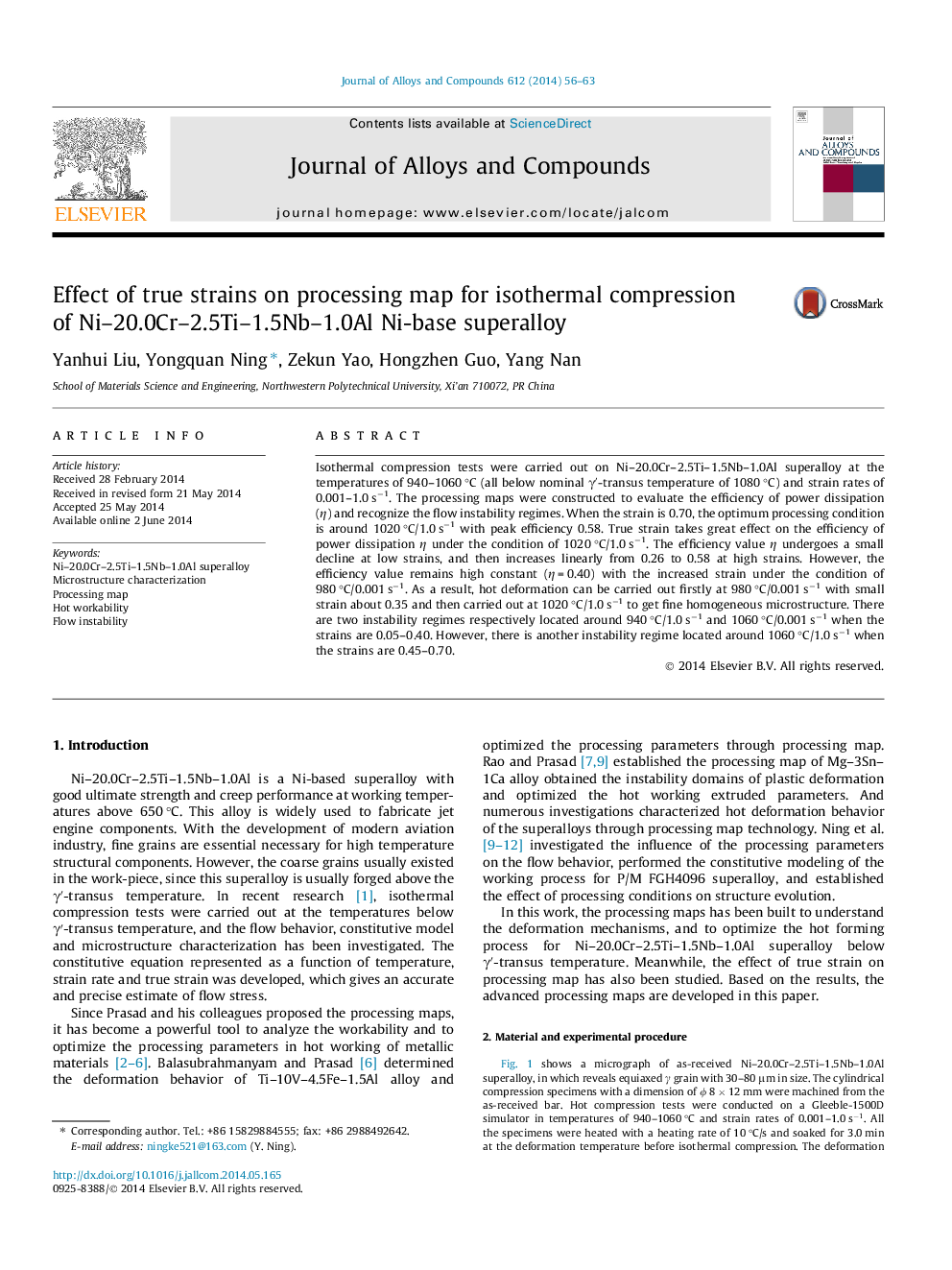| Article ID | Journal | Published Year | Pages | File Type |
|---|---|---|---|---|
| 1610718 | Journal of Alloys and Compounds | 2014 | 8 Pages |
•Hot deformation behavior of Ni–20.0Cr–2.5Ti–1.5Nb–1.0Al superalloy was investigated.•Power dissipation maps built at different strains exhibit similar features.•Processing map approach was adopted to optimize hot forging process for Ni–20.0Cr–2.5Ti–1.5Nb–1.0Al superalloy.
Isothermal compression tests were carried out on Ni–20.0Cr–2.5Ti–1.5Nb–1.0Al superalloy at the temperatures of 940–1060 °C (all below nominal γ′-transus temperature of 1080 °C) and strain rates of 0.001–1.0 s−1. The processing maps were constructed to evaluate the efficiency of power dissipation (η) and recognize the flow instability regimes. When the strain is 0.70, the optimum processing condition is around 1020 °C/1.0 s−1 with peak efficiency 0.58. True strain takes great effect on the efficiency of power dissipation η under the condition of 1020 °C/1.0 s−1. The efficiency value η undergoes a small decline at low strains, and then increases linearly from 0.26 to 0.58 at high strains. However, the efficiency value remains high constant (η = 0.40) with the increased strain under the condition of 980 °C/0.001 s−1. As a result, hot deformation can be carried out firstly at 980 °C/0.001 s−1 with small strain about 0.35 and then carried out at 1020 °C/1.0 s−1 to get fine homogeneous microstructure. There are two instability regimes respectively located around 940 °C/1.0 s−1 and 1060 °C/0.001 s−1 when the strains are 0.05–0.40. However, there is another instability regime located around 1060 °C/1.0 s−1 when the strains are 0.45–0.70.
